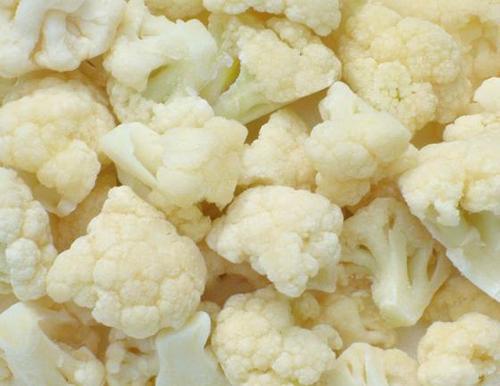1 Soybean demand for major nutrients Soybeans have relatively high economic value in grain and oil crops. Soybeans need more nitrogen, but they can be fixed by root nodules, generally from the atmosphere to obtain 5-7.5Kg / mu, about 40% -60% of soybeans need nitrogen. For each 100 Kg of soybean produced, 1.8-1.10 Kg of nitrogen (N), 1.8-3.0 Kg of phosphorus (P2O5) and 2.9-3.0 Kg of potassium (K2O) are needed to be absorbed from the soil. The ratio of nitrogen, phosphorus, and potassium needed was 1:0.17-0.23:0.39-0.41. It absorbs much more nutrients than rice, wheat and corn. 2 Soybean Fertilization Law Soybean growth is divided into seedling stage, branching stage, anthesis stage, crust stage, granule stage and maturity stage. The whole growth period is 90-130 days. The law of sucking fertilizer is: (1) The rate of nitrogen absorption. The emergence and branching period accounted for 15% of the total amount of nitrogen absorbed during the whole growth period, 16.4% from branching to full flowering, 28.3% from flowering to stalking, and 24% from drum bean. Flowering to grain size is the peak period of soybean nitrogen uptake. (2) Phosphorus absorption rate. The seedling stage accounted for 17% of the initial flowering period, 70% of the early flowering period to the drum bean period, and 13% of the drum grain to the mature period. Phosphorus is needed most in the mid-growth stage of soybean. (3) The rate of potassium absorption. Accumulative potassium absorption accounted for 43% before flowering, flowering to account for 39.5% of the granule phase, and still required to absorb 17.2% of potassium from drum grain to maturity. From the above, it can be seen that the flowering to pedicel stage is not only the peak period of soybean dry matter accumulation, but also the peak period of absorbing N, P, and K nutrients. 3 Technical Points for Fertilizing Soybeans Soybean fertilization system is generally composed of basal fertilizer, seed fertilizer and topdressing fertilizer. The principle of fertilization is to ensure that soybeans have sufficient nutrition, but also to play a role in nitrogen fixation of rhizobia. Therefore, whether in the early or late growth stage, nitrogen should not be used in excess so as not to affect the growth of Rhizobium or cause lodging. On the other hand, it is also necessary to correct the misconception that "there is no need for nitrogenous fertilizer for rhizobia." Fertilization should be done so that a large amount of nitrogen, phosphorus and potassium elements and boron, molybdenum, and other trace elements can be properly matched, and combined with slow-acting and quick-effect fertilizers. The summary is as follows: 3.1 Base fertilizer application of organic fertilizer is a key measure for increasing soybean production. Organic fertilizers can be applied to the former crops on the crop rotation, while soybeans use their subsequent effects. It is conducive to nodulation and nitrogen fixation and increases soybean production. Soybeans grown on low-fertility soils can be supplemented with 10 Kg each of calcium phosphate and potassium chloride, which is good for soybean production. 3.2 Seed fertilizer is generally used 10Kg-15Kg superphosphate or 5Kg diammonium phosphate as a seed fertilizer, boron-deficient soil plus borax 0.4-0.6 Kg. Because soybeans are dicotyledonous crops, seedlings are difficult to top soil at the time of emergence. Seed dressings are best applied to the lower or lateral parts of seeds, and must not be in direct contact with fertilizers. In addition, Huaibei and other places in our province have 1-2% ammonium molybdate seed dressing, and the effect is also very good. 3.3 Top dressing practice has proved that in the soybean seedling stage, when the root has not yet formed nodule, or when the nodule activity is weak, proper application of nitrogen fertilizer can make the plant grow robustly. It is also necessary to apply a small amount of nitrogen fertilizer at the flowering stage as appropriate. The amount of nitrogen fertilizer is usually urea urea 7.5-10 Kg is appropriate. In addition, flowering spraying with 0.2-0.3% potassium dihydrogen phosphate aqueous solution or per acre with 2-4 Kg calcium superphosphate water 100 Kg root spray, can increase grain nitrogen content, there is a significant increase in production; according to data Spraying 0.1% borax, copper sulphate, and manganese sulphate aqueous solution during flowering can promote full grain and increase soybean oil content.
The edible part of cauliflower is the flower part of the dish. The raw materials are white, big, and free from diseases and insect pests. At the beginning of processing, the outer leaves and petioles are first cut off and cut into smaller pieces. Wash 2-3 times, blanch 1-2 minutes in 100 C hot water. Remove and quickly cool to below 10 C. Drain and freeze and pack.The whole process strictly controls the hygienic conditions and is committed to providing customers with safe, clean and healthy Frozen Broccoli.
Frozen Cauliflower,Grated Cauliflower,Birds Eye Riced Cauliflower,Mashed Cauliflower Frozen LETING JINTIAN FRUIT AND VEGETABEL CO., LTD. , http://www.chinafrozenvegetable.com